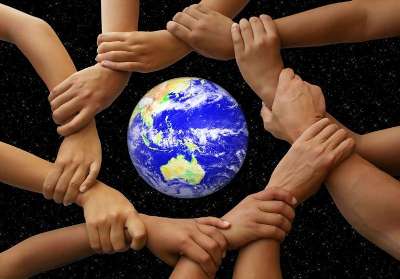Human groups key to preserving natural resources

Learning between human social groups may be key to sustaining the environment, according to a new study that uses mathematical modeling to understand what factors most influence societies to conserve natural resources.
Researchers at the National Institute for Mathematical and Biological Synthesis (NIMBioS) developed a model to simulate how societies with different social structures and institutions manage their resources. In the model, true to form, societies that over-exploited their environment went extinct, and societies survived when individuals cooperated by limiting their personal consumption.
But the researchers went further: they wanted to understand what factors influenced individual cooperation, enabling the societies to survive. The key appeared to be social groups.
In the model, societies that were divided into multiple groups were four times more likely to conserve their resources and survive than societies that had no sub-group divisions.
"Usually, we assume that everyone has to cooperate to save environmental resources, but what we found was that sustainable use of resources emerged more when societies were broken up into multiple groups, like states in the United States, or countries in Europe," said lead author Tim Waring, an associate professor at the Mitchell Center for Sustainability Solutions and the School of Economics at the University of Maine.
The model showed that societies broken up into multiple groups evolved better institutions for managing their resources because each group could learn from the successes and failures of the others.
"This between-group learning means that behaviors and institutions that help groups survive can spread among groups," Waring explained.
Waring cited the example of the United Nation's first climate change talks at the Rio Earth Summit in 1992, which took a top-down approach and was viewed largely as a failure, whereas the Paris climate change meeting in 2015 was successful in part because it emerged from the grassroots level, initially amongst smaller groups.
"Part of the problem is that cooperation is harder to grow in larger groups, but when smaller groups learn to cooperate and be sustainable, their practices can spread," Waring said.
More information: Timothy M. Waring et al, The coevolution of economic institutions and sustainable consumption via cultural group selection, Ecological Economics (2017). DOI: 10.1016/j.ecolecon.2016.09.022




















